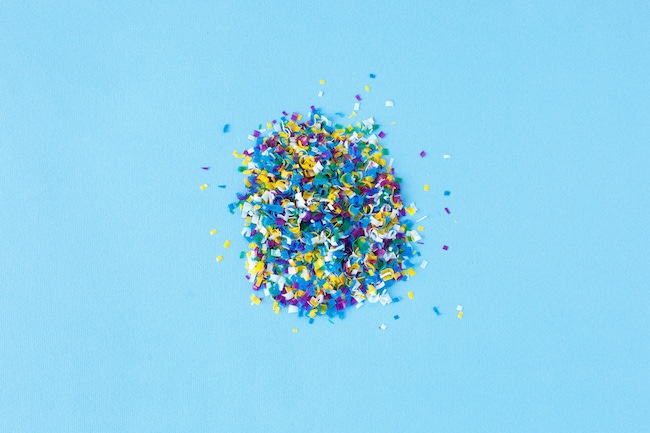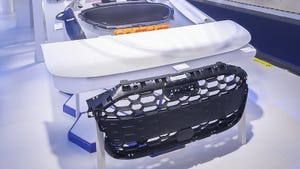It’s No Longer Raining Cats and Dogs — It’s Raining Plastic
A new study finds that there is enough microplastic raining down onto the national parks and wilderness areas of the American west each year to make as many as 300 million plastic bottles. Here’s the rest of the story.
June 18, 2020

On the heels of a new study on the presence of microplastics in the environment, plastic is getting a lot of attention in the media . . . again. The New York Times, the Smithsonian magazine, Science Daily, and others were all excited to report that it’s no longer raining cats and dogs — it’s raining plastic! Utah State University Assistant Professor and environmental scientist Janice Brahney and her team used high-resolution atmospheric deposition data to detect microplastics and other particulates collected over 14 months in 11 national parks and wilderness areas. The findings were reported in the June 12 issue of Science magazine in the article, “Plastic Rain in Protected Areas of the United States.”
An article in the Smithsonian (“The Forecast in National Parks Is Cloudy With a Chance of Plastic Rain”) noted that, according to Brahney, “There’s not a nook or cranny on the surface of the earth that [doesn’t] have microplastics.” Her study estimates that the “microplastics raining down onto the national parks and wilderness areas of the American west each year would be enough to make between roughly 120 million and 300 million plastic bottles.”
“We were shocked at the estimated deposition rates and kept trying to figure out where our calculations went wrong,” Brahney said in an interview in Science. “We then confirmed through 32 different particle scans that roughly 4% of the atmospheric particles analyzed from these remote locations were synthetic polymers.” The scientists found “tiny bits of plastic in 98% of the 339 samples they collected; plastics accounted for 4% of the dust particles that were tested,” noted the NYT’s June 11 article by John Schwartz.
My friend and industry associate, Allan Griff, asked an appropriate question: “So, what were the other 96% of dust particles and were they any more harmful?”
Microplastics have been found in waterways and oceans, but it was never suspected that these particles could be found in the atmosphere and fall to earth in remote wilderness areas. Science noted that the study showed “long-range transport and [. . .] large-scale patterns. This suggests that the microplastics are small enough to be entrained in the atmosphere for cross-continental transport.”
The NYT article noted that scientists concluded that “the particles deposited in wet weather were likely to have originated from relatively nearby, with the plastic bits swept into the air by storms from urban centers, and then falling again with the rain and snow. The smaller, lighter particles," they suggested, "had, by contrast, been carried extremely long distances on currents high in the atmosphere and become part of the cycles of global dust transport. The dry deposits constituted more than 75% of the plastic that was tested.”
The microfibers the researchers collected were consistent with the kinds of textiles used in making clothing as well as carpeting and outdoor gear like tents. However, another recent study by researchers from the University of Nottingham found a much higher percentage of ‘natural’ fibers than microplastic fibers in freshwater and atmospheric samples in the UK.
In a report on that earlier study in the March 22, 2019, issue of Phys.org, “Are Natural Fibers Really Better for the Environment than Microplastic Fibers?” it was noted that the researchers collected 223 samples from 10 sites from the River Trent, River Leen, and River Soar and four roofs of the university’s UK teaching campuses, and found that “natural” textile fibers represented a greater number of microfibers than microplastic textile fibers. “Microplastic fibers such as polyester and nylon were absent from 82.8% of samples, whereas ‘natural’ textile fibers were absent from just 9.7% of samples,” said the article by Charlotte Anscombe of the University of Nottingham.
Brahney doesn’t let us forget that these microplastics falling to Earth in the atmosphere might not be so good for humans — “we’re breathing [them], too,” she commented in the NYT article. Though she does admit that “the health effects of taking in plastic particles are not well known,” she warns us that “the sizes of the particles detected are consistent with the size of those that accumulate in lung tissue.”
Griff notes that, once again, the health scares surrounding plastics rears its ugly head, as the idea of “toxic plastics” continues to haunt the public. Decades of testing and studies showing that plastic or any of plastic’s components are not harmful to humans haven’t done much to assuage the fears that the anti-plastics activists foist upon consumers. The key is to keep people fearful of “toxic plastics,” to keep “plastiphobia” alive and well, and to fuel the fires of those who would rather rid the world of plastics, as Griff so often points out.
Even though Brahney admits that we don’t know just how harmful these airborne particulates are — or if they are harmful or at least more harmful than the particulates from the Arizona desert in a summer monsoon dust storm — I’m sure she and her research team will continue their studies in an attempt to prove that plastics are the bane of all existence.
Image: Ukrolenochka/Adobe Stock
About the Author(s)
You May Also Like




